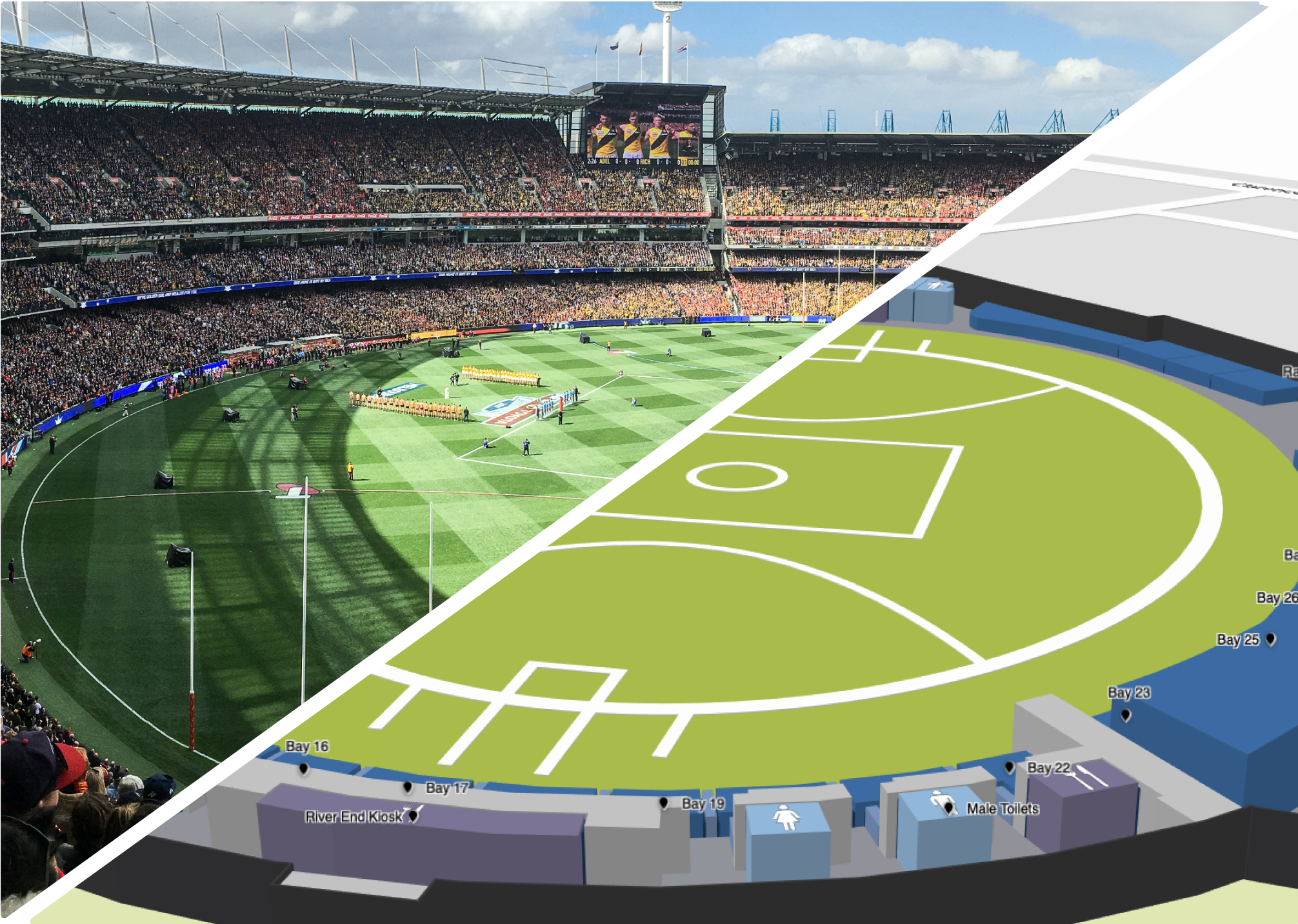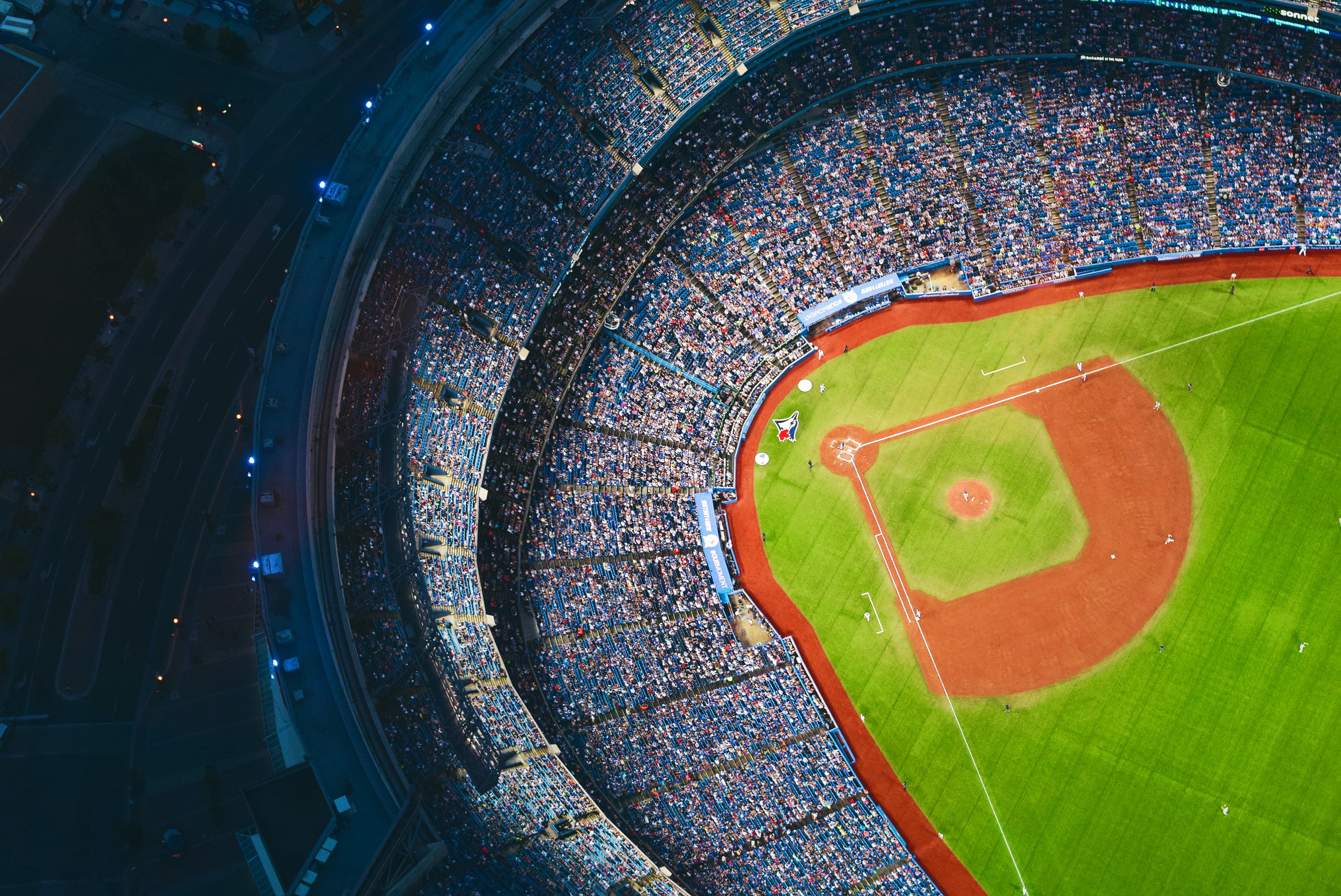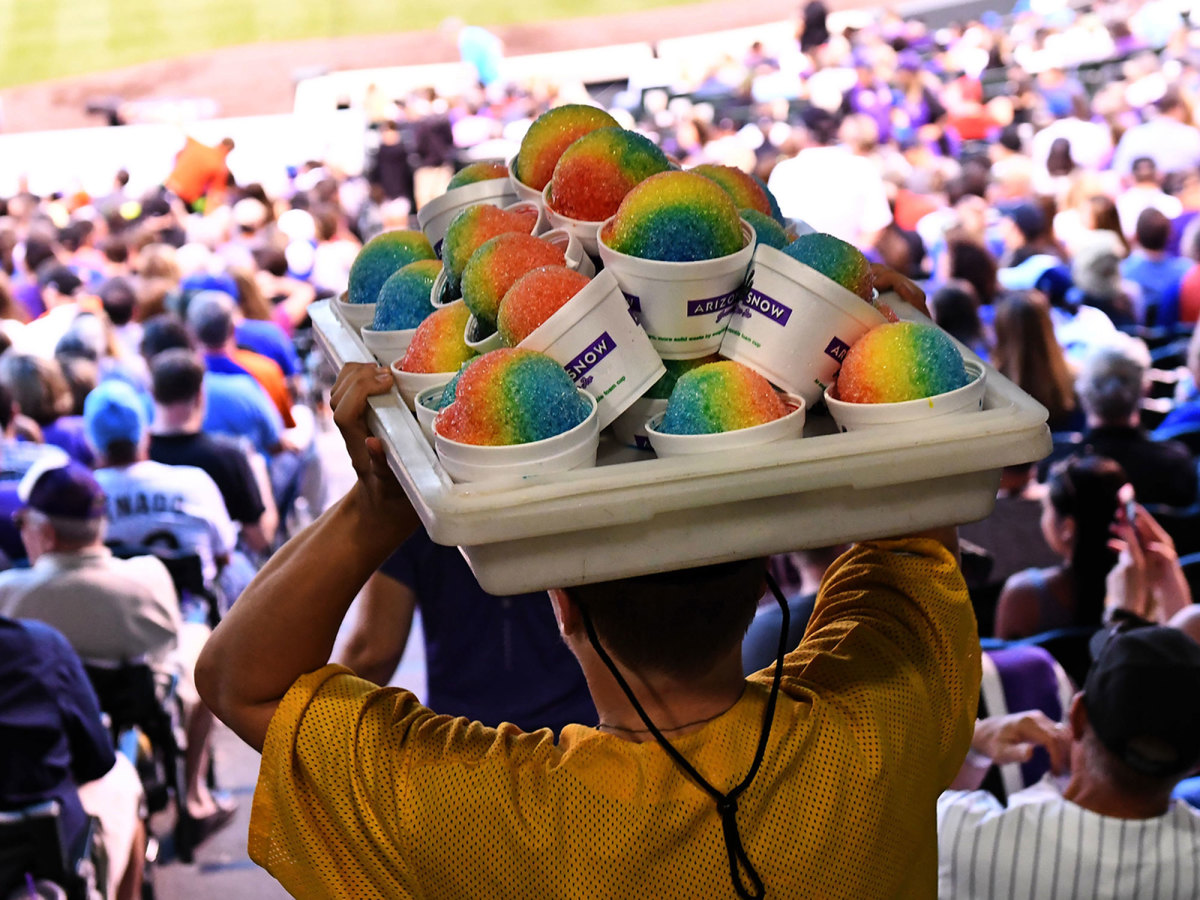Return to Resources
How to Create the Ultimate Fan Experience in Stadiums & Arenas
Jun 21, 2021
8 min read
Picture this: You begin walking up the stairs of area 104. The labels on the concrete steps read, “Section A”... “Section B”... “Section C”... until you finally reach your destination. You shuffle by the other people in the row and take your seat with a perfect view of the game. The crowd is going wild, screaming their favourite home-team chants. You’re wearing your favourite player's jersey with a smile on your face and ready to join in the cheer. You look down at your phone and see a notification:
“5 Minutes Until Game Time”
With limitations on how many fans are allowed in arenas, stadiums have had to improve and transform their venues to create the ultimate fan experience. Keep reading to find out seven ways stadiums are digitally transforming to create a better experience for players, fans, and employees.

1. Digital Ticket Distribution
The days of going to pick up a printed copy of a ticket are coming to an end. Digitally distributing tickets is a contactless, safe, and convenient procedure. Integrate with ticketing technology to prevent fraud and illegal resale and keep visitors secure. Embed links and QR codes with tickets, giving visitors all the information they need to have a successful visit to the stadium. Communicate anything from safety procedures to exclusive offers immediately after receiving a ticket so visitors can plan ahead. The digital distribution of tickets is simple and effortless, giving visitors the ability to access more information than ever before.
2. Stadium Wayfinding
Visitors entering a stadium want to be prepared. Stadiums are integrating with wayfinding systems to let fans know where their seat is and avoid wandering around and potentially missing some of the game or concert. Implementing a 3D wayfinding map allows visitors to view their exact location and follow turn-by-turn directions from any device, whether a large touchscreen kiosk or the browser of their mobile device. Locate your way to a parking lot, washroom, food stand, and more, ensuring no time is wasted. Stadiums can add a QR code to the distributed tickets, allowing visitors to scan and immediately get directions to their seats. Use QR codes to direct visitors to hand sanitizer stations, accessible gates, guest services, and other important spaces. Wayfinding can account for alerting fans of closed-off areas, creating a direct path for people to avoid traffic and wandering.
These maps can also provide analytics to see how people navigate through the venue. Leverage this data to understand how visitors interact within various spaces of the arena and their intent. Track searches, the most popular location selections and more, to make informed decisions regarding the layout of the stadium. For example, if numerous fans are searching for a hot dog stand near the east wing of the building, it could be worth adding one to increase foot traffic and revenue.

3. Social Distancing Protocols
Seating arrangements can be confusing with social distancing COVID protocols in place. Different sized bubbles, the cluster of people you feel comfortable associating with outside your household, can make seating groups difficult and hard to strategize within a digital 3D map. Stadiums are using Map Editors to edit their venue maps and achieve maximum efficiency when designing seating arrangements with distancing protocols. Use the draft mode of a Map Editor when visually reconstructing the seating arrangements of an arena to try out different layout combinations and pre-plan layout changes without compromising any live data. Communicate blocked-off sections to ticket distributors to ensure the new seating layout and ticket sales coordinate with each other.
4. Mobile Food and Drink Ordering
Have you ever missed part of a concert or game waiting in line? Stadiums are looking to solve this irritating problem through mobile ordering. Stadiums are administering QR codes that can be scanned and linked to external websites like a restaurant's online menu or an online store for an artist or team’s merchandise. QR codes or stadium apps can enable the mobile ordering of food and drink, right from your seat.
Tampa Bay Lightning’s home stadium, The Amalie Arena, has created an app where users can pay for concessions and merchandise, search for other events, and opt for upgrades and experiences. Stadiums want to ensure you catch 100% of the game or concert. Using blue dot technology, fans can purchase food and drinks from the closest vendor and have them delivered right to your seat. Implement pre-ordering for in-seat delivery to guarantee visitors get what they are craving, right when they want it. This cashless transaction minimizes staff contact and improves the speed of service, allowing visitors to avoid keypads and touchscreens.
5. Fan Engagement App
Live stream chats have created a community of people invested in a game, sharing their thoughts and opinions while all the action is happening. Arenas and stadiums want to bring this experience to in-person games as well. Missed a play? Check the fan engagement app to see what people are saying and find out what you missed. A fan engagement app can allow visitors to check the stats of their favourite team and most beloved players while getting alerts of when the game is starting. Offer personalized deals and discounts that fans at home don’t have access to, to promote the future purchasing of tickets. Make fans a part of the game.
Promote hashtags for people to post pictures and thoughts within the app and showcase some on the big screen, creating an immersive experience for everyone. For example, The Florida Gators have implemented “Swamp Moments” into their fan engagement app. “Swamp Moments” can include video board messaging, pregame and halftime field access, the opportunity to give Gators high fives as they head to the field, a two-person post-game game of catch with a signed football by Coach Mullen, the ability to sing the Alma Mater with the team, and the chance to watch the remaining five minutes of the game from the field.

6. AR & VR Technology
Stadiums are implementing augmented reality (AR) technology to provide visual content of statistics and play-by-plays. Stadiums have also started to implement virtual reality (VR) technology to create accurate calls for field rulings. This is a colossal improvement for sports as the game can be played fairly giving referees the information needed to make the most accurate call. With the aid of cameras strategically placed throughout the stadium, you can recreate and replay a 3D recreation of questionable gameplays.
Stadiums are implementing technology that can generate and replay full 3D recreations of game plays with precision and use it for on-field ruling and goal-line accuracy. Stadiums are using AR to help with practices as well. Teams can review precise visualizations of a player’s movement, technique, speed, and accuracy to assist in the training of swings, kicks, shots etc. AR provides players with real-time data about plays and instructions to follow.
This technology can also be used for fans, along with game officials and teams. Create the ultimate experience for fans who didn't get to see the live game by implementing AR technology for fans to roam around the stadium. The Minnesota Vikings are offering a virtual reality experience where fans can explore the US Bank Stadium and view footage from Vikings games and events. Enhance half-time shows and concerts with AR technology and take that experience beyond what fans can even imagine, keeping excitement high even when the game isn’t on.
7. Digital Sponsorships
With social distancing protocols, it's no secret that there are fewer guests in stadiums. Sponsors need to shift their traditional marketing strategies from static signage, sponsored sections and booths, product sampling, etc, to digital platforms and broaden their reach to people. Digital-out-of-home (DOOH) messaging provides a new way to market to in-person audiences.
Sponsors are using DOOH to provide a new interactive way to advertise products. Increase the visibility of sponsorships using bright and colourful screens to catch viewers’ attention while strategically showing ads at the right time and place to produce the most value. With social media engagement, sponsors can also personalize virtual feeds of advertisements to target different global audiences. Create high-impact ads by targeting audiences correctly and review insights to see what’s working.
When returning to the stadium, sponsorships are utilizing technology to create the ultimate fan experience through LED flooring to create sponsors for in-stadium experiences, digital photo booths, projection mapping, and audience-controlled camera platforms to create an innovative way to sponsor.
Create an experience that fans won’t forget and get people excited to cheer along in the stands when returning to a digitally transformed stadium. At Mappedin, we can help put some of these ideas into action. Visit our website to start giving your fans the experience they deserve.


